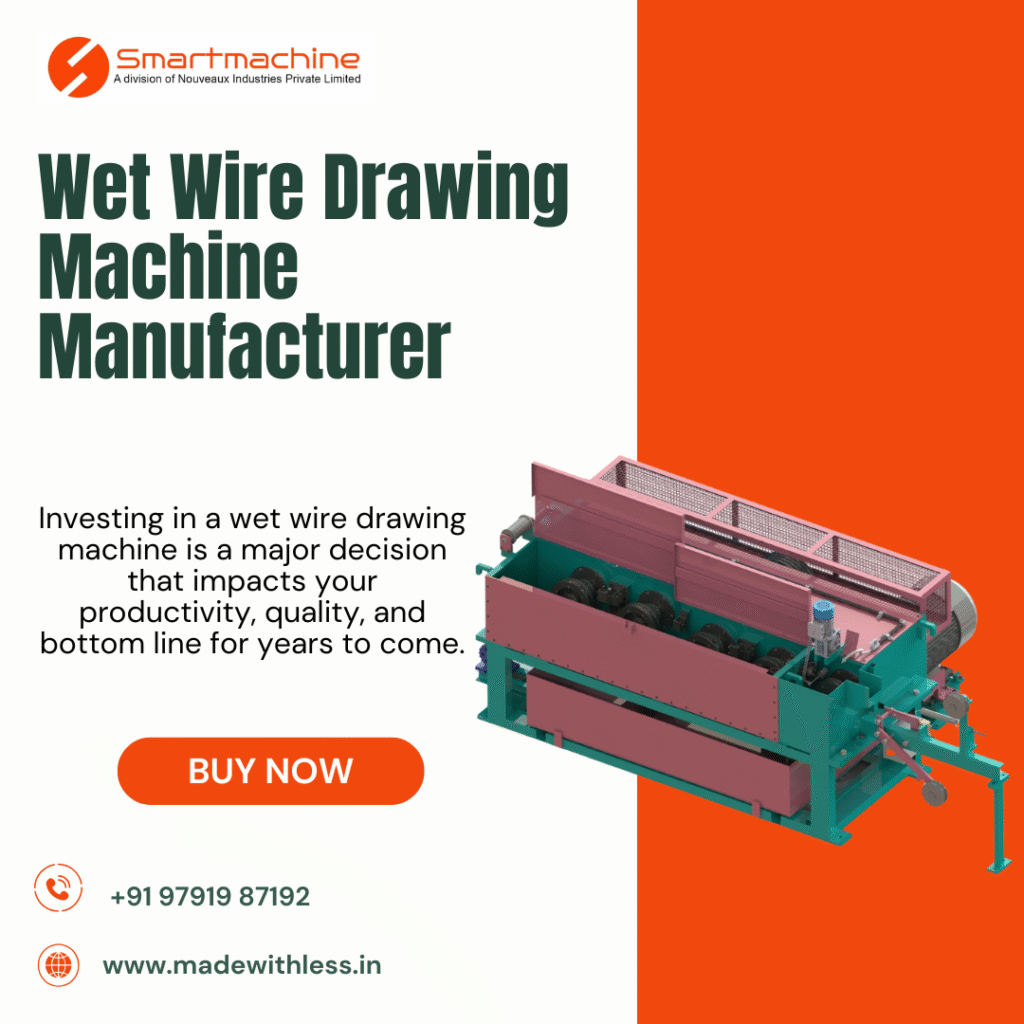Investing in a wet wire drawing machine is a significant decision that can dramatically impact your production efficiency, product quality, and bottom line. Whether you’re drawing steel, copper, aluminum, or other non-ferrous wires, choosing the right machine is not just about the initial price tag—it’s about finding a long-term partner for your growth.
Before you commit, here are the five critical factors you must consider to ensure you make a smart, future-proof investment.

1. The Material and Final Product Specifications
The heart of your decision lies in what you’re producing. Not all wire is created equal, and neither are the machines that draw it.
- Input Material: What is your raw material? The machine requirements for drawing high-carbon steel (like tire cord or spring wire) are vastly different from those for drawing soft copper or aluminum.
- Output Requirements: What is your target final diameter, tensile strength, and surface finish? A machine designed for coarse rod breakdown won’t achieve the fine tolerances and brilliant surface finish needed for high-value electronics or medical wire.
- Key Question: Does the manufacturer have a proven track record with your specific material and the precision tolerances you require?
2. Machine Capacity and Production Speed
Throughput is a direct driver of your ROI. You need a machine that matches your production volume without becoming a bottleneck.
- Line Speed: Measured in meters per minute, this dictates how fast you can produce wire. Balance your need for speed with the machine’s ability to maintain consistency at high velocities.
- Number of Dies/Blocks: This determines the total reduction in a single pass. More blocks allow for a greater reduction from rod to finished size without intermediate handling.
- Spooler Capacity: What is the maximum take-up weight? Larger spools mean less frequent changeovers, increasing overall equipment effectiveness (OEE).
- Key Question: Does the machine’s capacity align with your current orders and projected growth for the next 5-7 years?
3. Power Consumption and Operational Efficiency
In an era of high energy costs, the most affordable machine to purchase can become the most expensive to operate.
- Motor Technology: Look for modern, high-efficiency AC or DC drives. Variable Frequency Drives (VFDs) can offer significant energy savings by matching power consumption to the actual load.
- Automation Features: Automated pay-off, spool handling, and in-line monitoring systems reduce labor costs and minimize human error, leading to a more consistent and efficient operation.
- Cooling and Filtration: An efficient coolant system with proper filtration is not an accessory; it’s a necessity. It ensures die life, wire surface quality, and stable drawing temperatures, all of which impact cost and quality.
- Key Question: What is the machine’s specific energy consumption (kWh per ton of wire drawn), and what automation features are included to reduce operational overhead?
4. Durability, Maintenance, and After-Sales Support
A machine is a long-term asset. Its construction and the support behind it are crucial for minimizing downtime.
- Build Quality: Inspect the robustness of the frame, the quality of the gearboxes, and the wear resistance of critical components. A heavy-duty machine may cost more upfront but will have a much longer service life.
- Ease of Maintenance: How accessible are components for routine service? A well-designed machine allows for easy die changes, lubrication, and inspections.
- Supplier Reputation: This is perhaps the most critical factor. Does the manufacturer offer comprehensive after-sales support, including readily available spare parts, detailed technical documentation, and responsive service engineers?
- Key Question: What is the manufacturer’s mean time to repair (MTTR), and do they have a local service network or proven remote support capabilities?
5. Total Cost of Ownership (TCO), Not Just Purchase Price
Shifting your focus from initial price to TCO is the mark of a strategic buyer.
- Initial Investment: The purchase price of the machine.
- Operating Costs: Energy, consumables (dies, lubricants), labor, and maintenance.
- Cost of Downtime: The lost production revenue during unplanned stoppages. A reliable machine from a reputable supplier has a much lower cost here.
- Future-Proofing: Consider the machine’s adaptability. Can it be upgraded or reconfigured for new products?
- Key Question: Over a 5-year period, which option truly offers the best value when all costs are accounted for?
Conclusion: An Investment in Your Future
A wet wire drawing machine is not just a piece of equipment; it’s the core of your wire production process. By carefully evaluating these five factors—Material, Capacity, Efficiency, Support, and TCO—you move beyond a simple purchase and make a strategic investment in the quality, competitiveness, and profitability of your business for years to come. Take your time, consult with experts, and choose a partner, not just a provider.
